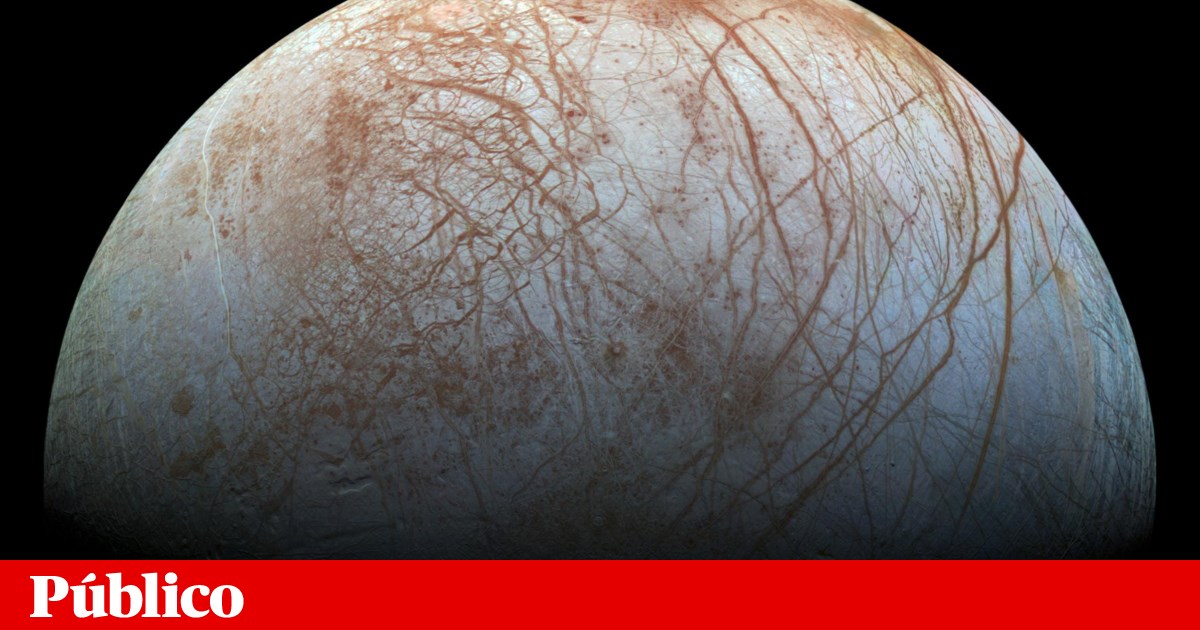Europa, Jupiter's ice-covered moon, generates 1,000 tons of oxygen every 24 hours, enough to keep a million people breathing for a day. However, the values are lower than expected, according to a study.
Mission scientists Juno NASA (the North American space agency) has calculated that this oxygen rate is much lower than that estimated by most previous studies.
Published Monday in the magazine Nature astronomyThe results were obtained by measuring the release of hydrogen from the moon's icy surface, using data collected by the Jovian Aurora Distributions Experiment (JADE) instrument.
The authors of the scientific article estimate that the amount of oxygen produced is about 12 kilograms per second. The European News Agency reported that previous estimates ranged from a few kilograms to 1,000 kilograms per second.
Scientists believe that some of the oxygen produced in this way could reach the lunar subsurface ocean as a potential source of metabolic energy.
With an equatorial diameter of 3,100 km, Europa is the fourth largest of Jupiter's 95 known moons and the smallest of the four Galilean moons orbiting that planet.
Scientists believe a vast inland ocean of salty water is hidden beneath Europa's icy crust, and are curious about the possibility of life-supporting conditions beneath the surface.
It's not just water that attracts the attention of astrobiologists: the position of Jupiter's moon also plays an important role in biological possibilities.
Europa's orbit places it in the middle of the gas giant's radiation belts. Charged or ionized particles from Jupiter bombard the moon's icy surface, splitting water molecules in two to generate oxygen that can reach the lunar ocean.
“Europe is like a ball of ice that is slowly losing its water in the flow. However, the flow, in this case, is a liquid of ionized particles that is engulfing Jupiter with its extraordinary magnetic field,” JADE scientist Jamie Szalay, of Princeton University, emphasized in a statement. In New Jersey, United States.
“When these ionized particles hit Europa, they break down the water ice molecule by molecule at the surface to produce hydrogen and oxygen. In a sense, the entire ice sheet is constantly being eroded by waves of charged particles hitting it,” he added.
while Juno Flying 354 kilometers from Europa on September 29, 2022, JADE identified and measured hydrogen and oxygen ions that were created by bombardment by charged particles and then “captured” by Jupiter's magnetic field as they passed the Moon.
“When the mission Galileo NASA's passage through Europa opened our eyes to the complex and dynamic interaction that Europa has with its environment. Juno “It provided a new ability to directly measure the composition of charged particles emanating from Europa's atmosphere, and we were keen to get a behind-the-scenes look at this exciting aquatic world,” Jami Salai said.
“But what we didn't realize was that the notes Juno “This would give us such a strong constraint on the amount of oxygen produced on Europa's icy surface,” he stressed.
Oxygen production is one of many aspects of the mission Europe Clipper NASA will investigate when it reaches Jupiter in 2030.

“Coffee trailblazer. Social media ninja. Unapologetic web guru. Friendly music fan. Alcohol fanatic.”

